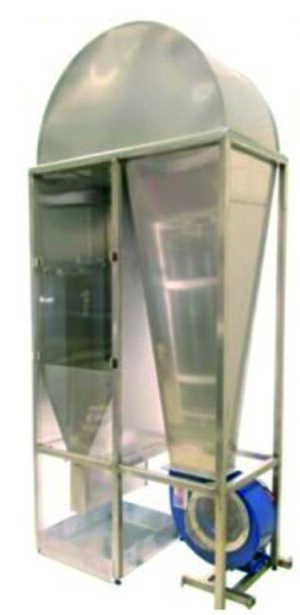Icing Wind Tunnel (IWiT)

In an Icing wind tunnel ice is accreted in a tunnel in a cold room. This is a way to study icing empirically. The method can be used to copy natural icing, and it can be used to accrete ice rime ice or glaze ice, or mixed glaze ice.
In the ice laboratory at Tampere University different ice types can be created in the Icing Wind Tunnel. This is done by controlling water and air flow rates through two nozzles in the IWiT. The room temperature can be lowered to freezing, and -10 degrees Celsius is commonly used. Distilled water is used to spray water mist into the tunnel, which the wind tunnel blows downwards to the freezing surface. The test parameters that affect the accreted ice type and accretion rate are water flow, air flow, temperatures of the cold room and water, nozzle height and wind speed. For example, decreasing the water flow or increasing the air flow, will make the accreted ice dryer, but it will also accrete slower.
Other experimental icing studies include forming ice in molds or using supercooled water without a wind tunnel, where the water droplets impact at a freefall speed rather than with wind speed.
References
- ↑ 1.0 1.1 Stenroos, C. (2015) Properties of icephobic surfaces in different icing conditions.
- ↑ Koivuluoto, H. et al. (2015). Research on icing behavior and ice adhesion testing of icephobic surfaces. In 16th International Workshop on Atmospheric Icing of Structures, IWAIS 2015, June 28-July 3, 2015, Uppsala, Sweden, pp. 183-188.
- ↑ Rønneberg, S. et al. (2019) The effect of ice type on ice adhesion. AIP advances. [Online] 9 (5), 55304–055304–8.